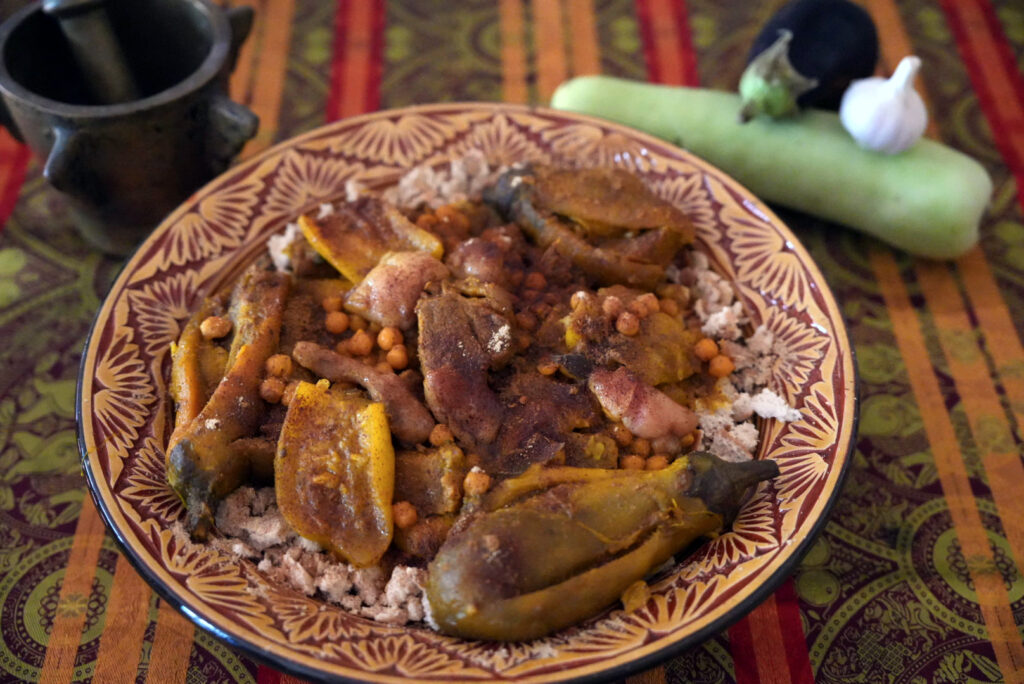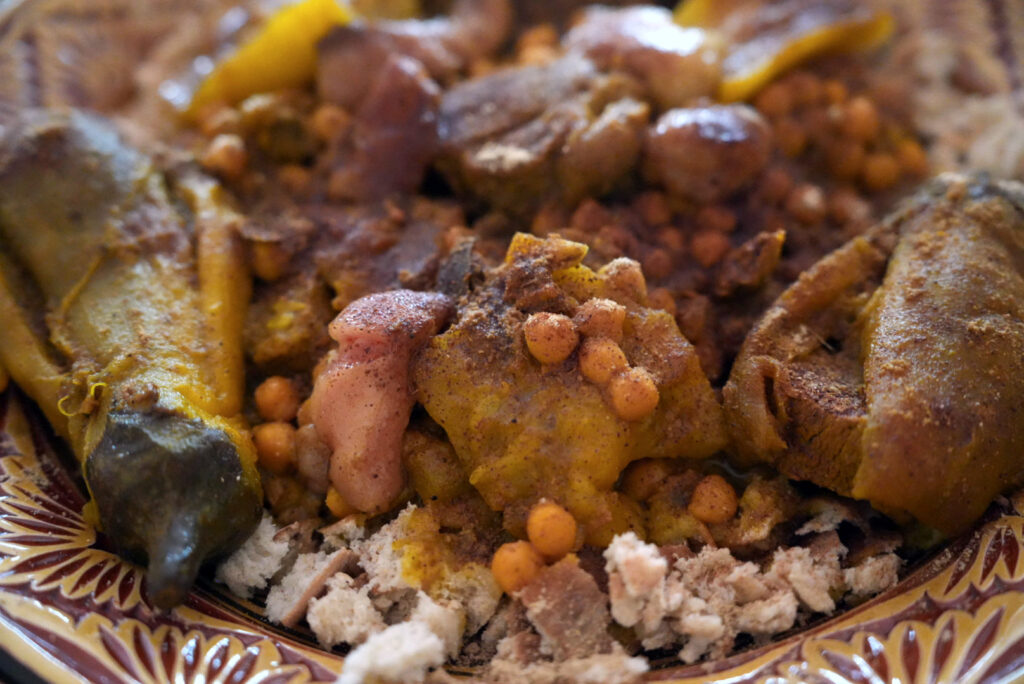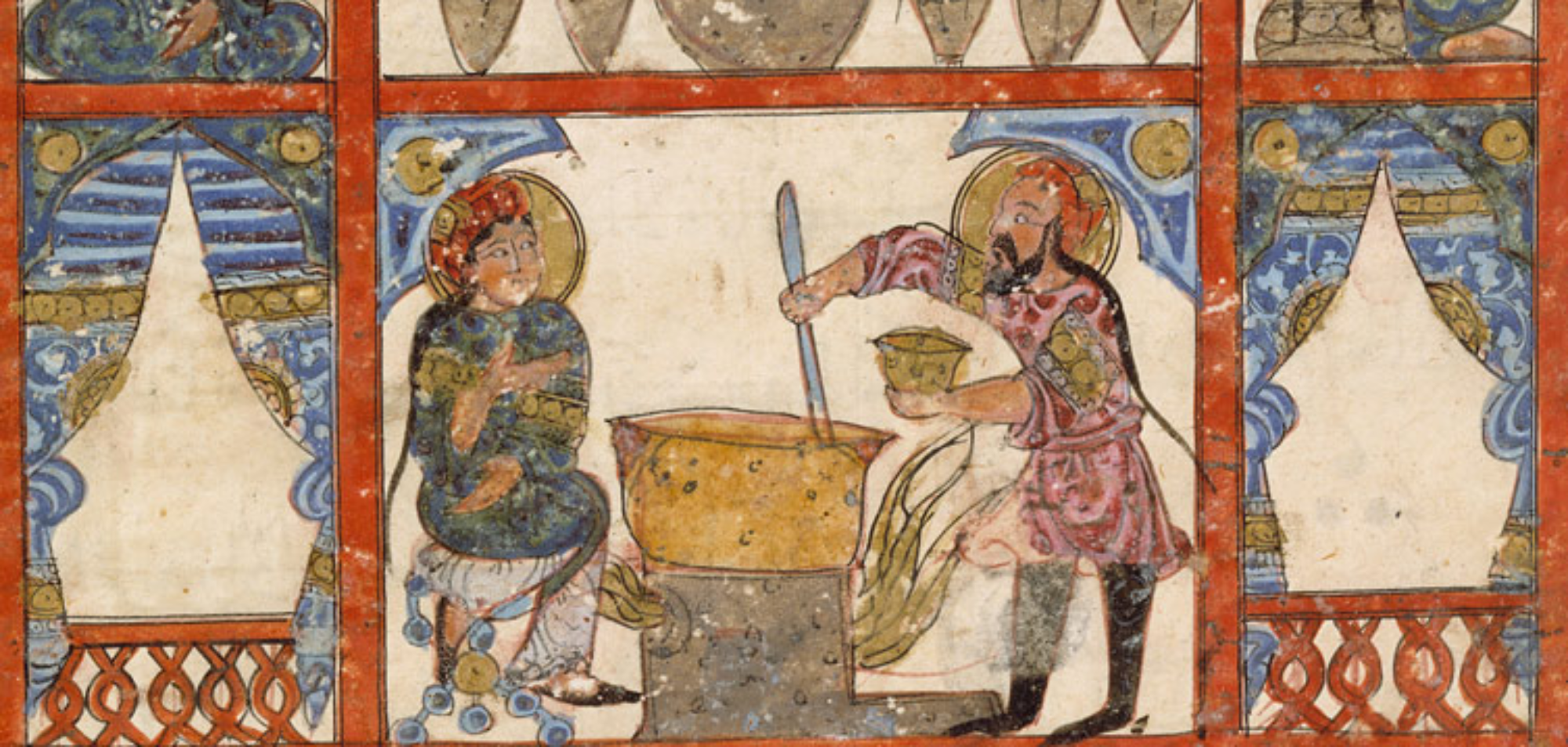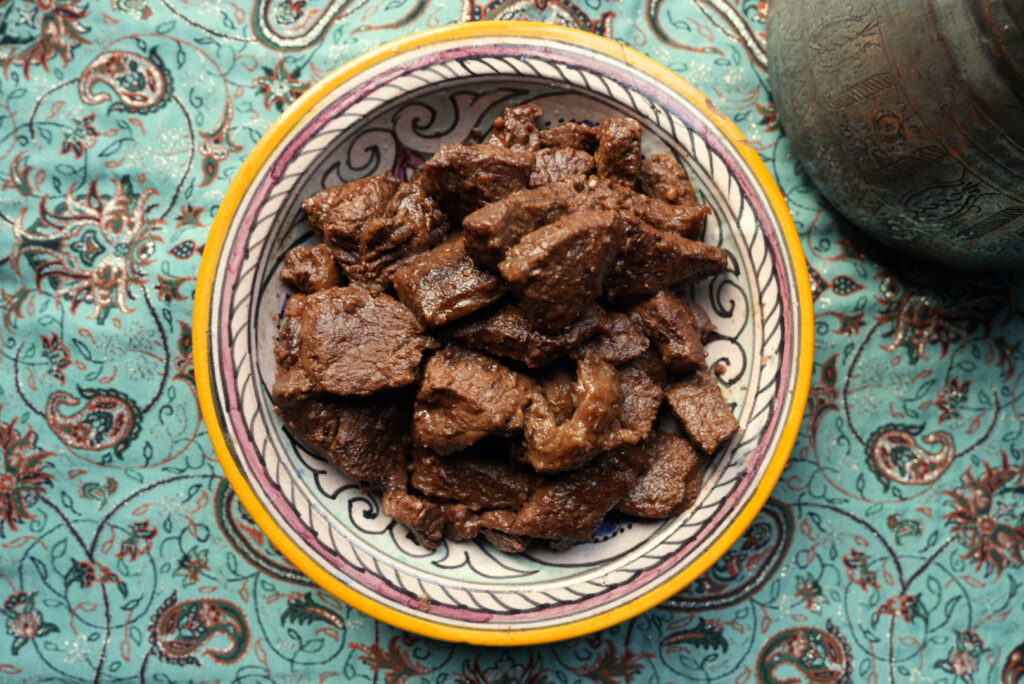Though originally hailing from the Muslim East — though the oldest recipes in fact go back to ancient Mesopotamia, the tharīda (ثريدة; also tharīd/ثريد) was extremely popular in the Muslim West, and it is in Andalusian cookery books that we find most recipes for this bread soup.
This recreation from ‘The Exile’s Cookbook’ calls for beef, gourd (use bottle gourd if you can), onion and aubergine, with seasonings including salt, pepper, ginger, coriander, saffron, cumin, garlic, citron leaves, fennel., and (unpeeled) garlic. The gourd and aubergine are cooked separately before being added to the pot with the meat and the spices. Once everything is done, some vinegar is added and then the stew is poured on crumbled bread.
Before serving, add a sprinkling of ginger and cinnamon. The recipe ends with a highly original instruction; one should blow in the bones and strike them repeatedly to expel all of the marrow, which should be spread all over the dish. The perfect comfort food!






